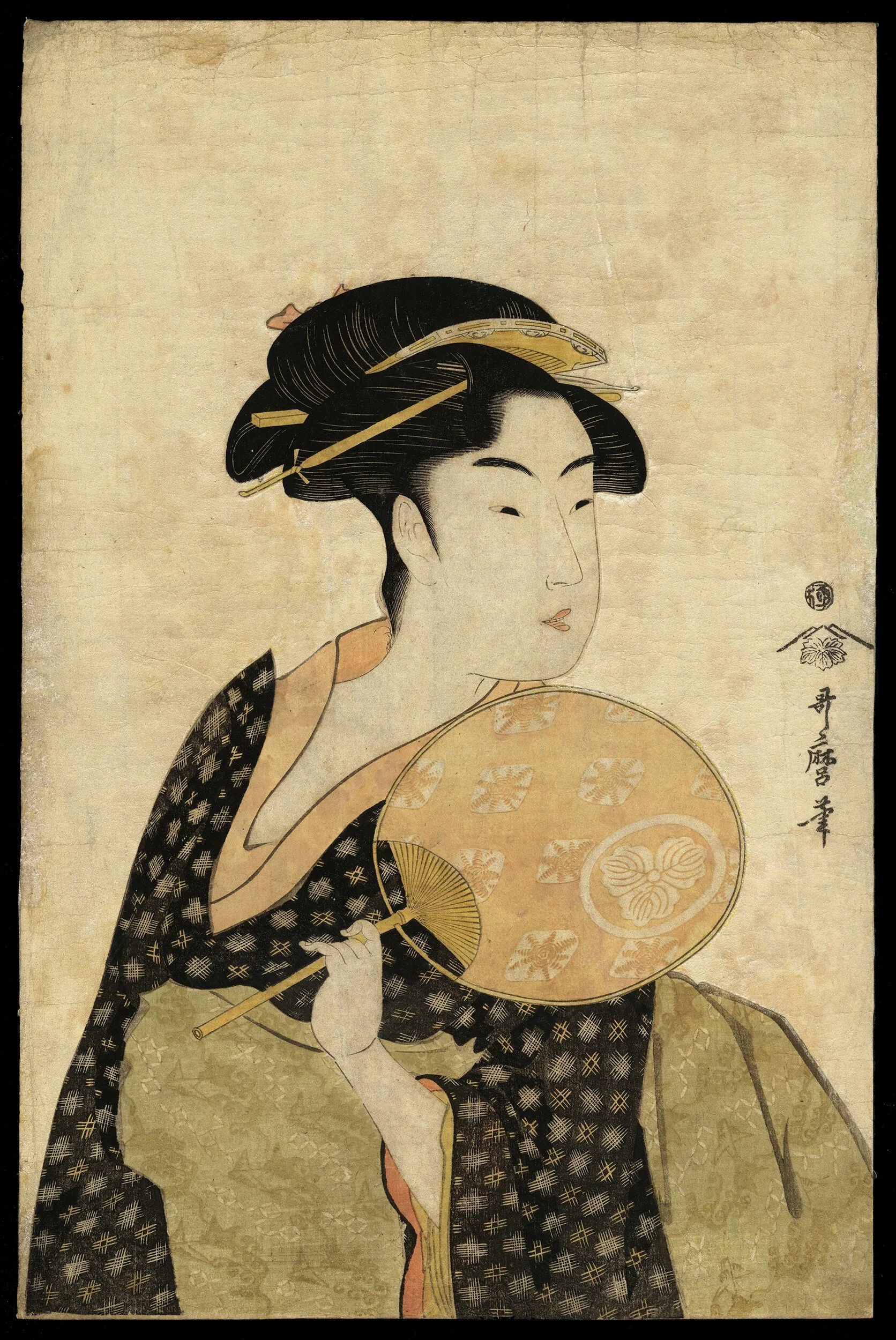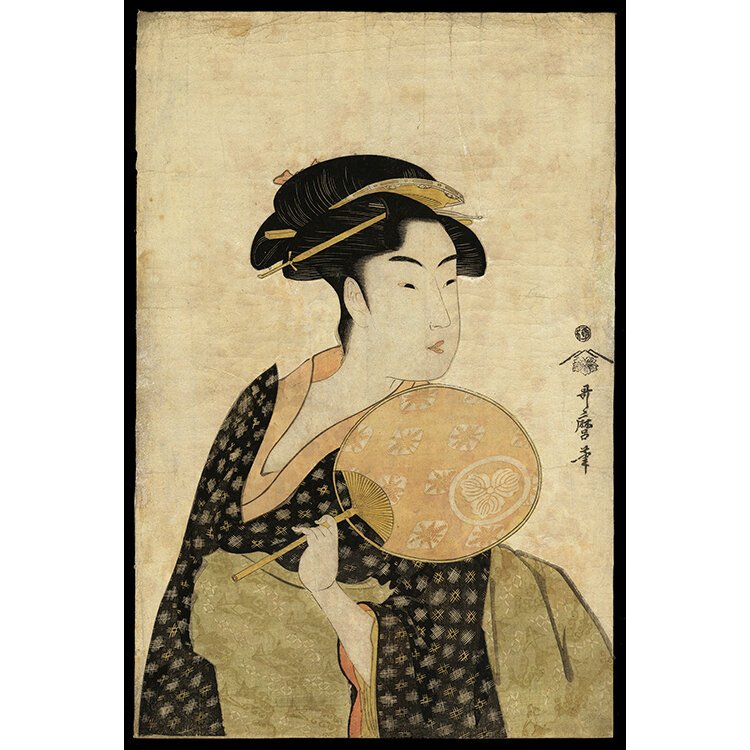 Image 1 of
Image 1 of

<b>TAKASHIMA OHISA </b> / Kitagawa Utamaroc. 1792<b>SOLD</b></em>
Takashima Ohisa
Kitagawa Utamaro (c. 1753–1806)
MEDIUM: Woodblock Print
DATE: c.1792
DIMENSIONS: 15 1/4 x 10 inches
CONDITION: Excellent; minor disturbances to silver mica background; light wrinkling and toning to paper
NOTE: First state—without cartouche
LITERATURE: Shugo Asano, Timothy Clark, The Passionate Art of Kitawaga Utamaro, British Museum Press, 1995
SOLD
Takashima Ohisa
Kitagawa Utamaro (c. 1753–1806)
MEDIUM: Woodblock Print
DATE: c.1792
DIMENSIONS: 15 1/4 x 10 inches
CONDITION: Excellent; minor disturbances to silver mica background; light wrinkling and toning to paper
NOTE: First state—without cartouche
LITERATURE: Shugo Asano, Timothy Clark, The Passionate Art of Kitawaga Utamaro, British Museum Press, 1995
SOLD
Takashima Ohisa
Kitagawa Utamaro (c. 1753–1806)
MEDIUM: Woodblock Print
DATE: c.1792
DIMENSIONS: 15 1/4 x 10 inches
CONDITION: Excellent; minor disturbances to silver mica background; light wrinkling and toning to paper
NOTE: First state—without cartouche
LITERATURE: Shugo Asano, Timothy Clark, The Passionate Art of Kitawaga Utamaro, British Museum Press, 1995
SOLD
Details
Kitagawa Utamaro (c. 1753–1806) is considered to be, by universal consensus, one of the giants of the Ukiyo-e school. He produced more than 2,000 print designs (many of superb quality and innovative conception), paintings (about 50 survive), and illustrated books, including roughly 20 anthologies of kyoka (playful verses), 30 albums of shunga ("spring pictures," explicit erotica), and 40 other genres, such as kibyoshi ("yellow covers," popular comic literature). Above all, Utamaro was the premier designer of bijin-ga (pictures of beautiful women) from around 1788 to 1806. Among the glories of his oeuvre are many okubi-e ("large head pictures" or bust portraits) and half-length figures.
Connoisseur's Note
Around 1792–1793, Utamaro designed many of the bijin-ga masterpieces that have long been recognized as icons of Ukiyo-e. In three exquisite prints, Utamaro depicted some of the alluring beauties of the day living in Edo, setting each idealized portrait against a mica background and alongside an inscribed kyoka poem. These young women were Naniwaya Okita, a waitress at the Naniwaya teahouse near the Asakusa Temple; Tomimoto Toyohina, a geisha and professional performer of Tomimoto-school chanting who worked at the Tamamuraya house in the Yoshiwara pleasure district; and Takashima Ohisa, the daughter of Takashima Chôhei, the proprietor of the Takashimaya rice-cake shop in Yagenbori, Ryogoku.
Handwritten inscriptions on one known impression of another work — Utamaro’s Toji san bijin (Three Beauties of the Present Day, c. 1793) — claims (the reliability is uncertain) that Naniwaya Okita moved to Osaka, Tomimoto Toyohina became the concubine of a feudal lord, and Takashima Ohisa married into a rice-cake business in Asakusa (see Asano and Clark reference, no. 104)
The famous, rare, and much sought-after design offered here, a portrait of Takashima Ohisa, is a lifetime second-state impression without the poem slip at the upper left. It enclosed a kyoka that read: Aikyo mo / cha mo koborestsutsu / samenu nari / yoi hatsuyume no / Takashimaya tote (Charms and tea are brimming over / and neither gets cold! / Let me not wake / from this lucky dream of the New Year / at Takashimaya) [translation from Asano, Shûgo and Clark, Tim: The Passionate Art of Utamaro: British Museum, 1995, p. 120, no. 106.]
Ohisa is shown holding a rigid fan (uchiwa) patterned with the Takashimaya’s crest of three oak leaves. Her black robe is made in a dyed kasuri pattern of 5x5-stroke forms plus variant wooden “well-frames” (izutsu), while her sash (obi) is decorated with plovers (chidori) flying over stylized splashing waves. Records indicate that in 1793 Ohisa would have been only sixteen years of age. However, her legendary beauty had already been widely proclaimed to much the same degree as celebrity is broadcast today.


